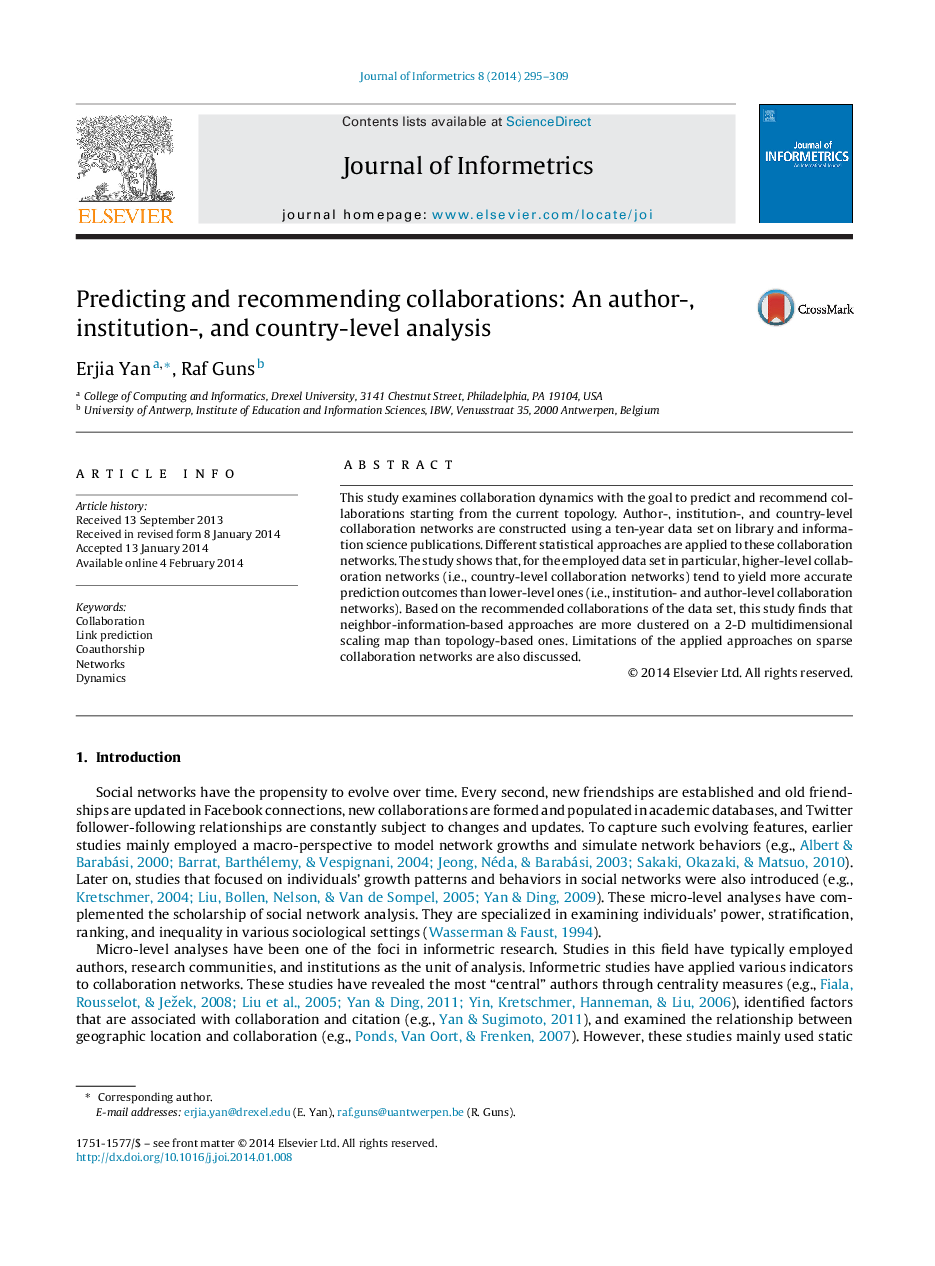| Article ID | Journal | Published Year | Pages | File Type |
|---|---|---|---|---|
| 10358385 | Journal of Informetrics | 2014 | 15 Pages |
Abstract
This study examines collaboration dynamics with the goal to predict and recommend collaborations starting from the current topology. Author-, institution-, and country-level collaboration networks are constructed using a ten-year data set on library and information science publications. Different statistical approaches are applied to these collaboration networks. The study shows that, for the employed data set in particular, higher-level collaboration networks (i.e., country-level collaboration networks) tend to yield more accurate prediction outcomes than lower-level ones (i.e., institution- and author-level collaboration networks). Based on the recommended collaborations of the data set, this study finds that neighbor-information-based approaches are more clustered on a 2-D multidimensional scaling map than topology-based ones. Limitations of the applied approaches on sparse collaboration networks are also discussed.
Related Topics
Physical Sciences and Engineering
Computer Science
Computer Science Applications
Authors
Erjia Yan, Raf Guns,
